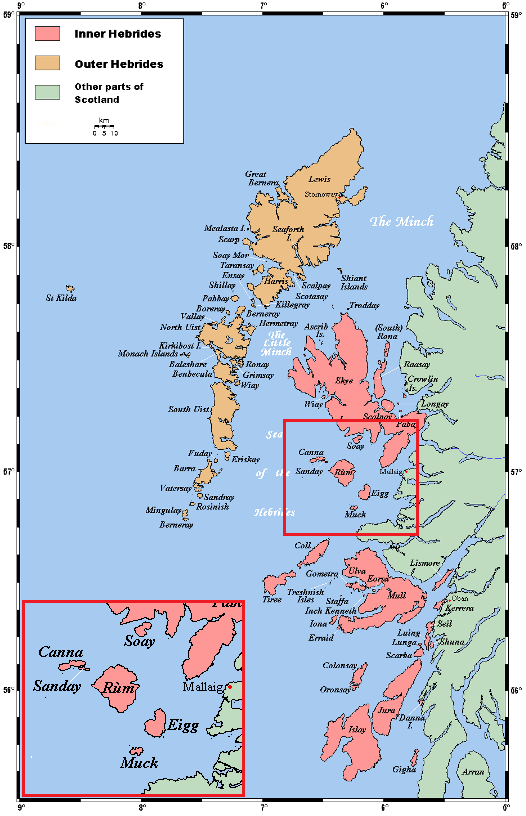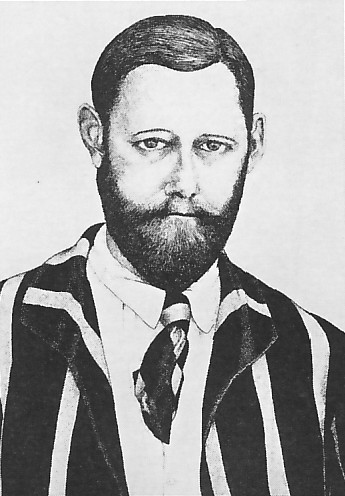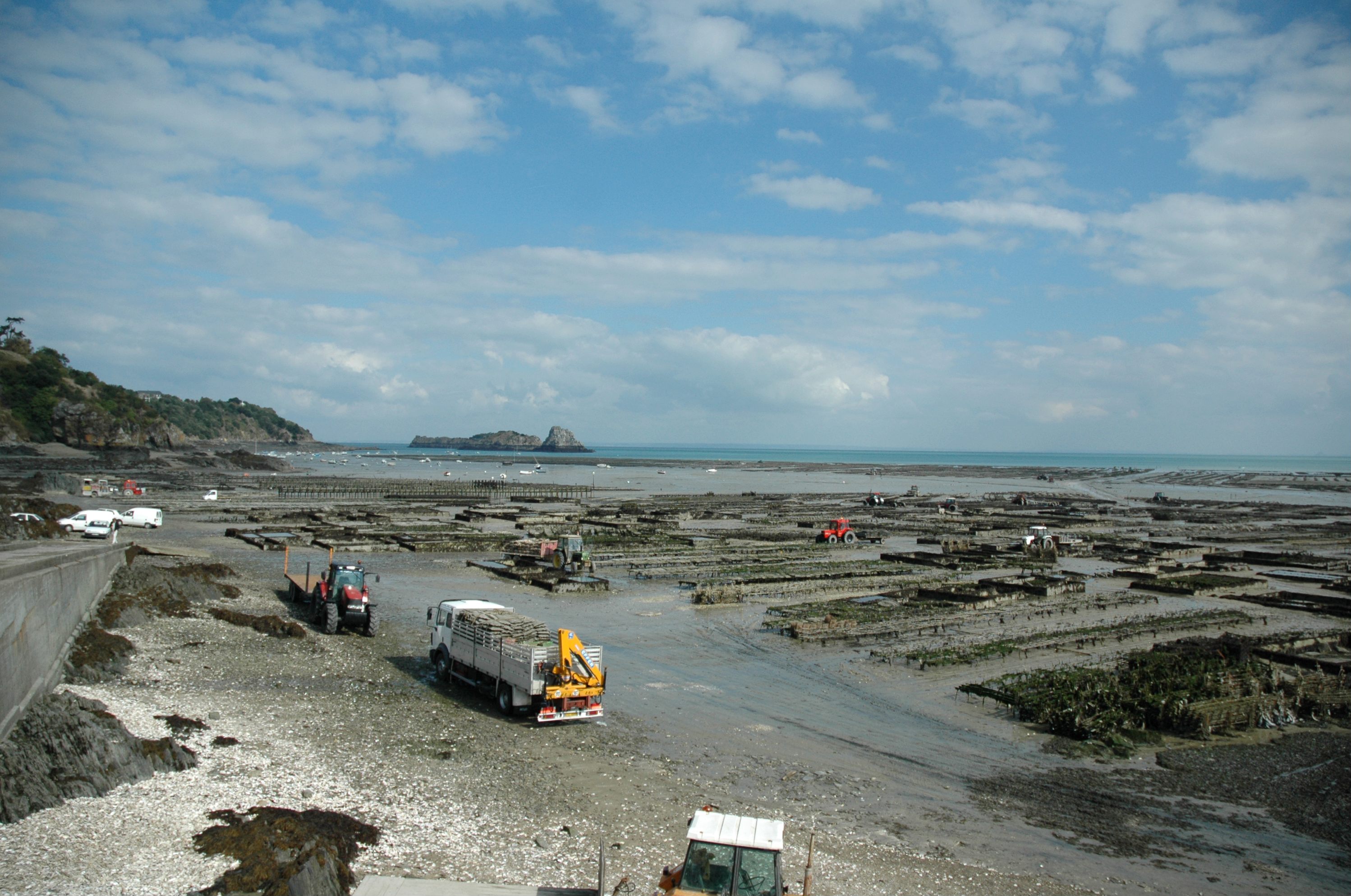|
Dromore Castle (County Kerry)
Dromore Castle is a manor house in Templenoe, County Kerry, Ireland, looking out over the Kenmare River. It was built in the 1830s for the Mahony family to a neo-gothic design by Sir Thomas Deane. Building Dromore Castle was designed and built for Denis Mahony by the architect Thomas Deane, probably assisted by his brother Kearns Deane. Work began in 1831, although the account books show that only a negligible amount had been carried out before May 1834. Building work was completed in 1839. The house is in the castellated Gothic Revival style, with an external finish of Roman Cement with limestone dressings. With the notable exception of the grand south facing window with its pointed arch, the windows consist of pointed tracery contained within rectangular frames, a style characteristic of Deane's domestic work. The entrance hall, which is in the form of a long gallery, takes up half of the area of the ground floor. The west wing of the Castle takes the form of a round to ... [...More Info...] [...Related Items...] OR: [Wikipedia] [Google] [Baidu] |
Dromore Castle
{{Dab ...
Dromore Castle may refer to: * Dromore Castle (County Clare), near Ruan * Dromore Castle (County Kerry), near Templenoe * Dromore Castle (County Limerick), a ruined castle in Ireland near Pallaskenry Pallaskenry () is a village in County Limerick, Ireland. Pallaskenry derives its name from Kenry Castle (the palisaded castle at Kenry), nowadays known as Shanpallas Castle. opographical Dictionary of Ireland, p455, Lewis It was one of the prin ... [...More Info...] [...Related Items...] OR: [Wikipedia] [Google] [Baidu] |
Turret (architecture)
In architecture, a turret is a small tower that projects vertically from the wall of a building such as a medieval castle. Turrets were used to provide a projecting defensive position allowing covering fire to the adjacent wall in the days of military fortification. As their military use faded, turrets were used for decorative purposes, as in the Scottish baronial style. A turret can have a circular top with crenellations as seen in the picture at right, a pointed roof, or other kind of apex. It might contain a staircase if it projects higher than the building; however, a turret is not necessarily higher than the rest of the building; in this case, it is typically part of a room, that can be simply walked into – see the turret of Chateau de Chaumont on the collection of turrets, which also illustrates a turret on a modern skyscraper. A building may have both towers and turrets; towers might be smaller or higher, but turrets instead project from the edge of a building ra ... [...More Info...] [...Related Items...] OR: [Wikipedia] [Google] [Baidu] |
Skye Boat Song
"The Skye Boat Song" is a late 19th-century Scottish song recalling the journey of Prince Charles Edward Stuart ("Bonnie Prince Charlie") from Benbecula to the Isle of Skye as he evaded capture by government troops after his defeat at the Battle of Culloden in 1746. Sir Harold Boulton, 2nd Baronet composed the lyrics to an air collected by Anne Campbell MacLeod in the 1870s, and the line "Over the Sea to Skye" is now a cornerstone of the tourism industry on the Isle of Skye. Alternative lyrics to the tune were written by Robert Louis Stevenson, probably in 1885. After hearing the Jacobite airs sung by a visitor, he judged the lyrics to be "unworthy", so made a new set of verses "more in harmony with the plaintive tune". It is often played as a slow lullaby or waltz, and entered into the modern folk canon in the twentieth century with versions by Paul Robeson, Tom Jones, Rod Stewart, Roger Whittaker, Tori Amos, and many others. Content The text of the song gives an accou ... [...More Info...] [...Related Items...] OR: [Wikipedia] [Google] [Baidu] |
Lyrics
Lyrics are words that make up a song, usually consisting of verses and choruses. The writer of lyrics is a lyricist. The words to an extended musical composition such as an opera are, however, usually known as a "libretto" and their writer, as a "librettist". The meaning of lyrics can either be explicit or implicit. Some lyrics are abstract, almost unintelligible, and, in such cases, their explication emphasizes form, articulation, meter, and symmetry of expression. Rappers can also create lyrics (often with a variation of rhyming words) that are meant to be spoken rhythmically rather than sung. Etymology The word ''lyric'' derives via Latin ' from the Greek ('), the adjectival form of '' lyre''. It first appeared in English in the mid-16th century in reference to the Earl of Surrey's translations of Petrarch and to his own sonnets. Greek lyric poetry had been defined by the manner in which it was sung accompanied by the lyre or cithara, as opposed to the chanted forma ... [...More Info...] [...Related Items...] OR: [Wikipedia] [Google] [Baidu] |
Harold Boulton
Sir Harold Edwin Boulton, 2nd Baronet, (7 August 1859 – 1 June 1935), son of Sir Samuel Bagster Boulton, 1st Baronet of Copped Hall, born in Charlton then part of Kent, was an English baronet, songwriter and philanthropist, most famously author of the lyrics to the "Skye Boat Song". He first became interested in Scottish folk songs as an undergraduate at Oxford. A portrait by Bassano is in the National Portrait Gallery collection. He married, first, Adelaide Lucy Davidson, daughter of Duncan Davidson of Tulloch Castle, and had three children, Louise Kythé Veronica Boulton (18 September 1890 – 21 May 1934), Christian Harold Ernest Boulton (17 February 1897 – 12 October 1917) and Denis Duncan Harold Owen Boulton, 3rd Baronet Boulton, known as "Harold" (10 December 1892 – 10 August 1968), who was a survivor of the 1915 sinking of the RMS ''Lusitania''. After his first wife's death on 26 April 1926, he was married again, to Margaret Cunningham Lyons, daughter of James Len ... [...More Info...] [...Related Items...] OR: [Wikipedia] [Google] [Baidu] |
The Championships, Wimbledon
The Wimbledon Championships, commonly known simply as Wimbledon, is the oldest tennis tournament in the world and is widely regarded as the most prestigious. It has been held at the All England Club in Wimbledon, London, since 1877 and is played on outdoor grass courts, with retractable roofs over the two main courts since 2019. Wimbledon is one of the four Grand Slam tennis tournaments, the others being the Australian Open, the French Open, and the US Open. Wimbledon is the only major still played on grass, the traditional tennis playing surface. Also, it is the only Grand Slam that retains a night-time curfew, though matches can now continue until 11.00 pm under the lights. The tournament traditionally takes place over two weeks in late June and early July, starting on the last Monday in June and culminating with the Ladies' and Gentlemen's Singles Finals, scheduled for the Saturday and Sunday at the end of the second week. Five major events are held each year, with addi ... [...More Info...] [...Related Items...] OR: [Wikipedia] [Google] [Baidu] |
Tennis
Tennis is a racket sport that is played either individually against a single opponent ( singles) or between two teams of two players each ( doubles). Each player uses a tennis racket that is strung with cord to strike a hollow rubber ball covered with felt over or around a net and into the opponent's court. The object of the game is to manoeuvre the ball in such a way that the opponent is not able to play a valid return. The player who is unable to return the ball validly will not gain a point, while the opposite player will. Tennis is an Olympic sport and is played at all levels of society and at all ages. The sport can be played by anyone who can hold a racket, including wheelchair users. The modern game of tennis originated in Birmingham, England, in the late 19th century as lawn tennis. It had close connections both to various field (lawn) games such as croquet and bowls as well as to the older racket sport today called real tennis. The rules of modern tennis have ... [...More Info...] [...Related Items...] OR: [Wikipedia] [Google] [Baidu] |
Harold Mahony
Harold Segerson Mahony (13 February 1867 – 27 June 1905) was a Scottish-born Irish tennis player who is best known for winning the singles title at the Wimbledon Championships in 1896. His career lasted from 1888 until his death in 1905. Mahony was born in Scotland but lived in Ireland for the majority of his life; his family were Irish including both of his parents, the family home was in County Kerry, Southwestern Ireland. He was the last Scottish born man to win Wimbledon until the victory of Andy Murray at the 2013 championships. Career Mahony was born at 21 Charlotte Square, Edinburgh to Richard John Mahony, an Irish barrister and prominent landowner. The family had a home in Scotland but spent most of their time at Dromore Castle, in County Kerry, Ireland. Harold trained on a specially built tennis court at Dromore. Mahony made his Wimbledon debut in 1890 exiting in the first round. He reached the semifinal in 1891 and 1892. Mahony spent some time in America in the m ... [...More Info...] [...Related Items...] OR: [Wikipedia] [Google] [Baidu] |
Oyster Farming
Oyster farming is an aquaculture (or mariculture) practice in which oysters are bred and raised mainly for their pearls, shells and inner organ tissue, which is eaten. Oyster farming was practiced by the ancient Rome, ancient Romans as early as the 1st century BC on the Italian peninsula and later in Roman Britain, Britain for export to Rome. The French oyster industry has relied on aquacultured oysters since the late 18th century. History Oyster farming was practiced by the ancient Romans as early as the 1st century BC on the Italian peninsula. With the Barbarian invasions the oyster farming in the Mediterranean and the Atlantic came to an end. In fact, the Romans were the very first to cultivate Oysters. The Roman engineer Sergius Orata is known for his innovative ways of breeding and commercializing oysters. He did this by cultivating the mollusk with a system that could control the water levels. In 1852 Monsieur de Bon started to re-seed the oyster beds by collecting ... [...More Info...] [...Related Items...] OR: [Wikipedia] [Google] [Baidu] |
Catholic
The Catholic Church, also known as the Roman Catholic Church, is the largest Christian church, with 1.3 billion baptized Catholics worldwide . It is among the world's oldest and largest international institutions, and has played a prominent role in the history and development of Western civilization.O'Collins, p. v (preface). The church consists of 24 ''sui iuris'' churches, including the Latin Church and 23 Eastern Catholic Churches, which comprise almost 3,500 dioceses and eparchies located around the world. The pope, who is the bishop of Rome, is the chief pastor of the church. The bishopric of Rome, known as the Holy See, is the central governing authority of the church. The administrative body of the Holy See, the Roman Curia, has its principal offices in Vatican City, a small enclave of the Italian city of Rome, of which the pope is head of state. The core beliefs of Catholicism are found in the Nicene Creed. The Catholic Church teaches that it is th ... [...More Info...] [...Related Items...] OR: [Wikipedia] [Google] [Baidu] |
Great Famine (Ireland)
The Great Famine ( ga, an Gorta Mór ), also known within Ireland as the Great Hunger or simply the Famine and outside Ireland as the Irish Potato Famine, was a period of starvation and disease in Ireland from 1845 to 1852 that constituted a historical social crisis which subsequently had a major impact on Irish society and history as a whole. With the most severely affected areas in the west and south of Ireland, where the Irish language was dominant, the period was contemporaneously known in Irish as , literally translated as "the bad life" (and loosely translated as "the hard times"). The worst year of the period was 1847, which became known as "Black '47".Éamon Ó Cuív – the impact and legacy of the Great Irish Famine During the Great Hunger, roughly 1 million people died and more than 1 million Irish diaspora, fled the country, causing the country's population to fall by 20–25% (in some towns falling as much as 67%) between 1841 and 1871.Carolan, MichaelÉireann's ... [...More Info...] [...Related Items...] OR: [Wikipedia] [Google] [Baidu] |
Soup Kitchen
A soup kitchen, food kitchen, or meal center, is a place where food is offered to the Hunger, hungry usually for free or sometimes at a below-market price (such as via coin donations upon visiting). Frequently located in lower-income neighborhoods, soup kitchens are often staffed by Volunteering, volunteer organizations, such as Church body, church or community groups. Soup kitchens sometimes obtain food from a food bank for free or at a low price, because they are considered a Charitable organization, charity, which makes it easier for them to feed the many people who require their services. Many historical and modern soup kitchens serve only soup, or just soup with bread. But other establishments which refer to themselves as a "soup kitchen" also serve a wider range of food, so social scientists sometimes discuss them together with similar hunger relief agencies that provide more varied hot meals, like food kitchens and meal centers. While societies have been using various met ... [...More Info...] [...Related Items...] OR: [Wikipedia] [Google] [Baidu] |





.jpg)

